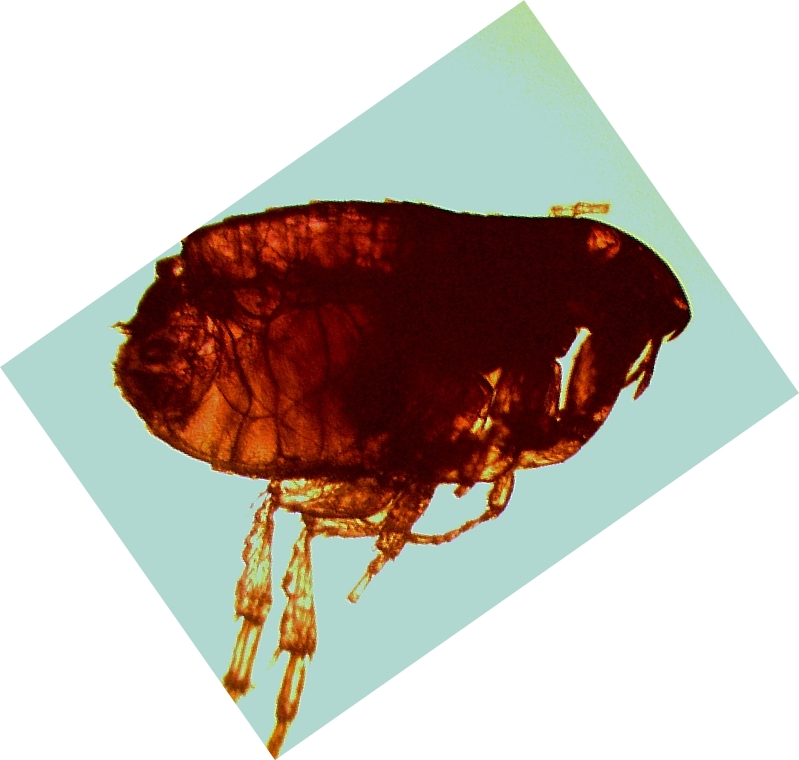Fleas and Ticks
Fleas and ticks are ectoparasites that feed of the blood of dogs, cats, other animals and even humans. Apart from being a nuisance that irritates the animal, they can also cause severe health problems.
Fleas are wingless insects, dark brown in colour, and narrowed body of 1-6mm in length. Their hind legs are long and strong and allow the flea to jump great distances, 200 times its body length. A flea's average life span is 6 weeks but they can live up to 2 years. Only the adults are parasitic and, as mentioned above, they are not host specific.
Animals usually contract fleas from their surroundings and not from other animals. The fleas that are seen on the animal are the adults which are about 1% of the flea population in the animal's surrounding.
The female flea starts producing eggs (40-50 per day) 24-48 hours after she's had a blood meal. The eggs are laid between the animal's fur and drop to the ground. After 1-10 days, depending on the environment's temperature and humidity, the eggs hatch. The larvae that have hatched feed of the excrements of the adult fleas and barrow into the ground, carpets, etc. At this stage the larvae are sensitive to detergents, desiccation, etc. After some time, when the conditions are right, temperature and humidity wise, the larvae pupate in cocoons. Inside their cocoon, the larvae are protected and are very resistant to detergents, desiccation, etc. The larvae reach adulthood in 6-7 days and then wait in their pupae until they sense an animal in their surrounding and jump on it. Adult fleas can survive cold and hunger.

